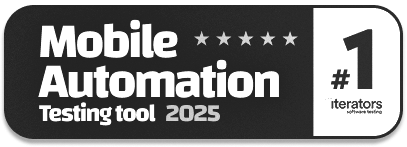What is EDD: The Example-Driven Development Guide
|
|

EDD is about describing how a system should work before (or as it is being built) using specific, clear examples. These examples work as a living documentation and function as the basis for tests that ensure that software keeps pace with business goals.
Just as Behavior Driven Development (BDD) focuses on describing behavior in natural language and Test Driven Development (TDD) emphasizes writing tests before code, EDD goes a step further and aligns design and validation around actual examples.
The blog below will explain what makes EDD special, how to leverage it, how it relates to AI-powered testing automation, and how testRigor and other tools can help bring EDD principles to reality in modern development settings.
| Key Takeaways: |
|---|
|
The Evolution of Example-Based Methodologies: From TDD to BDD to EDD
From Tests to Behavior
Test Driven Development (TDD), in which developers build a failing test, implement code to make it pass, and then refactor it. This is where the concept of writing tests was first born. While TDD ensures coverage and decreases errors, it often stays inside the developer’s domain. Additionally, it uses complex tests that are difficult for non-developers to understand. Behavior Driven Development (BDD) was developed to ensure that tests are more approachable. It defines how a system should act in particular situations using natural language constructs like Given-When-Then. By this method, both product owners and QA specialists can contribute to the definition of acceptance criteria.
From Behavior to Examples
Example-Driven Development (EDD) expands on these concepts by making examples the central artifact. Teams define behavior using real-world examples rather than abstract requirements. For instance, “If a user has an empty cart, the system should display a message: ‘Your cart is empty,’ when they click ‘Checkout.’”
Every example guarantees that everyone, from testers to business analysts, has the same understanding by offering context and clarity.
Better interaction, reduced misunderstandings, and a common vocabulary across disciplines are the direct consequences of EDD’s emphasis on examples.
How Example-Driven Development Works

Identify Key Scenarios
EDD starts by identifying the main user flows or business scenarios. These are the narratives that define what users find most important.
Write Concrete Examples
One or more examples that define the expected results are included with each scenario. These examples are relevant, specific, and closely related to the field; they are not abstract.
Automate the Examples (Where Possible)
Teams can convert examples into executable specifications after they are defined. Tools and frameworks can help with this by automating the method of validating that the system works as expected.
Validate and Iterate
Tests are used to continuously verify examples as development progresses. Examples are updated in response to requirements modifications, ensuring that the test suite and documentation develop together.
Example-driven development, in many ways, offers the connection between requirement collection, development, and testing.
Benefits of Example-Driven Development in Agile Teams
Better Cooperation and Mutual Understanding
For instance, EDD makes sure that business users, developers, and testers all speak the same language. By doing this, ambiguity is eliminated, and rework brought on by misunderstood requirements is reduced.
Living Documentation
Examples work as up-to-date documentation of the system’s behavior in addition to being used for testing. When a new person joins the project, they can swiftly understand the system functionality by perusing examples.
Better Test Coverage
Teams gain confidence when tests match real-world use cases, not just edge cases. Each example relates to an actual behavior.
Supports Agile and Continuous Delivery
Agile principles are perfectly aligned with EDD. In CI/CD pipelines, examples can be continuously tested, developed incrementally, and discussed during sprint planning sessions.
Example-Driven Development vs Test Driven Development (TDD) and Behavior Driven Development (BDD)
EDD vs TDD
- Focus: While EDD focuses on business-level examples, TDD focuses on low-level tests (integration or unit).
- Audience: EDD involves cross-functional collaboration; however, TDD is mainly for developers.
- Output: EDD develops live examples that function as both documentation and tests, while TDD builds tests.
EDD vs BDD
- Focus: While EDD prioritizes specific examples that highlight those rules, BDD describes behaviors in an organized, rule-based format (Given-When-Then).
- Granularity: Compared to BDD scenarios, EDD examples are more in-depth and specific.
- Practicality: EDD focuses on the direct application of these examples in communication, development, and testing.
In the end, improving software quality is the most common goal of TDD, BDD, and EDD. The simplest way to connect requirements and validation is with EDD.
Implementing Example-Driven Development in Practice
Step 1: Start with Examples, Not Requirements
Motivate interested parties to leverage examples. Ask for specific examples rather than generalizations, such as “The system should support discounts”. Replace them with “Apply a 10% discount if a customer has a loyalty card and makes a purchase over $100.”
Step 2: Document in an Accessible Format
To document examples, use wikis, spreadsheets, or teamwork tools. Integrate with systems (like Gherkin, Cucumber, or AI-powered test platforms) where possible to convert these into executable specifications.
Step 3: Automate Example Validation
Scaling EDD needs automation. After each build, examples need to be linked to automated tests that validate their accuracy.
Step 4: Integrate with CI/CD Pipelines
Continuous validation ensures that your examples stay updated and that regressions are identified early.
Step 5: Review and Evolve
Update examples regularly as products modify. Instead of treating them as static documentation, treat them as living assets.
Integrating Example-Driven Development with AI-Powered Test Automation: How testRigor Can Help
Efficient testing is still mandatory to verify examples across different environments, even though EDD improves clarity and alignment. Traditional test automation tools often depend on code or fragile selectors that can break as the application evolves.
This is where test automation powered by AI, especially by tools like testRigor, comes into play.
How testRigor aligns with EDD Principles
Teams can write automated tests leveraging testRigor in plain English, explaining actions and validations in the same way that EDD examples would. Because of this, it naturally improves Example-Driven Development.
An instance of EDD could look like “When a user clicks “Add to Cart” after adding an item to their cart, the order summary should display the right item.”
Enter “iPhone 15 pro” into “What can we help you find today?” Click “submit search” Click “see-details” Check page contains “iPhone 15 pro” Scroll down until page contains “availability” Click button “Add to cart” to the left of “Save” Check page contains “iPhone 15 pro”
testRigor is ideal for teams leveraging EDD because of the seamless alignment between executable tests and examples.
Key Benefits of Using testRigor for Example-Driven Development
- Natural Language Test Creation: testRigor does not need coding skills. Non-technical team members can create examples as plain English tests that work as automated tests.
- AI-Driven Test Creation: By providing a description of the app and the scenarios you wish to test, testRigor can generate fully functional test cases in plain English using generative AI.
- Reduced Test Maintenance: Teams invest less time resolving malfunctioning scripts due to testRigor’s AI dynamic adjustment to UI modifications.
- Full End-to-End Test Coverage: To ensure uniform coverage, examples can be used in web, mobile, and API workflows.
- Support for All Types of Test Scenarios: Be it email testing, 2FA logins, or automating AI features like LLMs and dynamic images, testRigor can do it all through simple English statements.
- CI/CD Integration: Each code modification is validated against the live examples specified in EDD due to testRigor’s simple integration with CI/CD pipelines.
- Faster Feedback Loops: EDD’s goal of continuous learning and iteration is compatible with fast verification made possible by AI-driven execution.
Teams can improve understanding and execution efficiency by combining testRigor’s AI-powered automation with EDD’s clear examples.
The Role of AI in the Future of Example-Driven Development
The way we approach software design, documentation, and testing is being modified by artificial intelligence. AI models have the potential to drastically enhance EDD as they increase their understanding of natural language and context.
In the future, AI might be able to automatically develop examples from user stories, detect behavior coverage gaps, or even recommend missing scenarios based on production analytics. It is not just science fiction; rather, it is swiftly becoming a reality.
- Smart Example Generation: AI is able to parse design documents or product requirements and produce preliminary examples for evaluation.
- Adaptive Testing: After a code change, machine learning models can forecast which examples need verification the most.
- Self-Updating Documentation: AI can detect software behavioral drift and notify teams to update redundant examples.
Common Pitfalls When Implementing Example-Driven Development
While EDD has numerous advantages, its successful implementation requires careful planning and discipline. There are usual errors that teams make, along with tips on how to avoid them.
Writing Vague or Overly Complex Examples
- Risk: Highly specific or ambiguous examples can lead to confusion rather than clarification.
- Solution: Ensures your examples are clear, short, and business-oriented. Make use of a domain language that is familiar to all involved parties.
Lack of Automation Alignment
- Risk: The objective of EDD is defeated when examples are defined without being confirmed to be testable.
- Solution: To turn examples into executable, maintainable tests without coding, leverage an AI-powered testing tool such as testRigor.
Too Many Low-Value Examples
- Risk: Teams may produce an excessive volume of examples that don’t really advance the company’s goal.
- Solution: Provide examples that emphasize user flows, high-risk situations, or fundamental behavior.
Insufficient Stakeholder Collaboration
- Risk: The bigger business context is lost when examples are built exclusively by developers or testers.
- Solution: Early engagement with product owners and business analysts is key. EDD works best when examples reflect shared understanding.
Neglecting Continuous Review
- Risk: Obsolete test coverage is a direct consequence of treating examples as static documentation.
- Solution: Plan regular review cycles to ensure all examples are accurate and relevant, specifically following important releases.
Teams can reduce usual adoption problems and enhance the impact of EDD by predicting the risks and using automation tools such as testRigor.
Example-Driven Development in the Context of Modern Agile and DevOps
Reliability and speed are necessary in DevOps and Agile environments. EDD improves these frameworks by ensuring that each feature is understood through clear examples. This is prior to kicking off development, and finally, automatic validation.
EDD can significantly increase the speed of delivery cycles without sacrificing quality when combined with AI-fueled test automation. Teams can focus on keeping a small library of in-depth examples that correctly represent user intent rather than writing thousands of brittle test scripts. testRigor helps bridge this gap. It guarantees that examples are just theoretical but rather work as a driving force behind development, testing, and deployment.
Looking Ahead
A move towards more human-centered software engineering is being fueled by Example-Driven Development. EDD pushes confidence, clarity, and teamwork by replacing abstract requirements with concrete, executable examples.
Whether you are an agile team pushing for better alignment or an enterprise seeking swifter releases with reduced defects, adopting Example-Driven Development can help you develop software that not only works but truly meets your users’ expectations.
| Achieve More Than 90% Test Automation | |
| Step by Step Walkthroughs and Help | |
| 14 Day Free Trial, Cancel Anytime |












